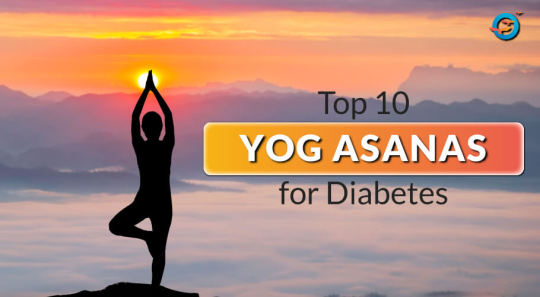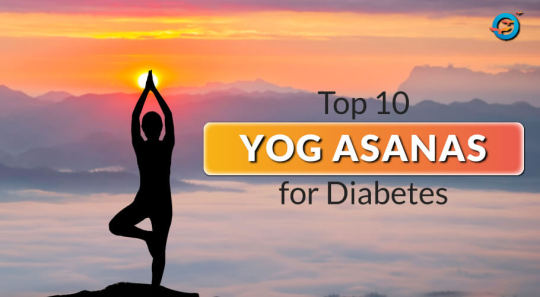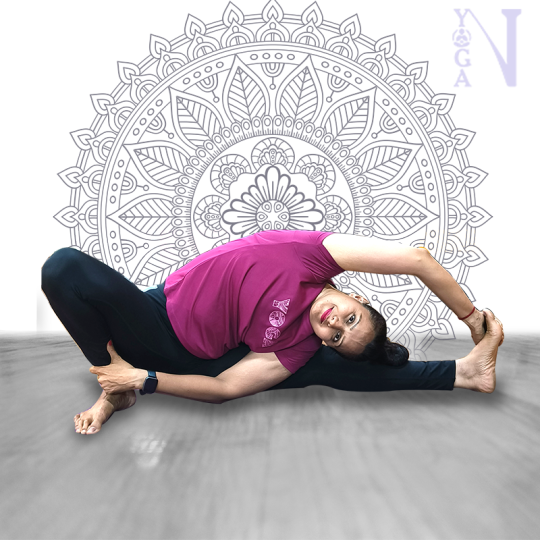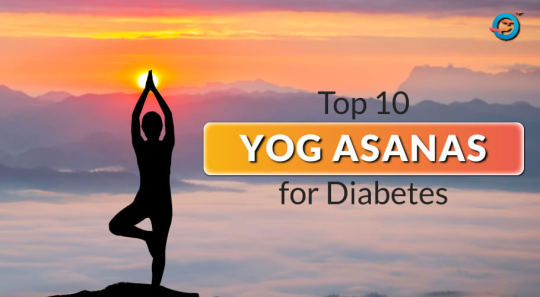#pranayam yoga
Explore tagged Tumblr posts
Text
Gnosis Medical Yoga: Revitalize Your Health with Pranayama Yoga in Pune

Pranayama Yoga in Pune at Gnosis Medical Yoga helps you revitalize your health. Learn to harness the power of your breath for mental clarity, physical strength, and emotional calm.
#Pranayama Yoga Courses in Pune#Pranayama Yoga in pune#Pranayama Yoga Classes in Pune#Pranayam in Ashtang Yoga
0 notes
Text

Yoga Asanas for Managing Diabetes
The most powerful tools in managing diabetes is Yoga. Yoga is good for the entire body, improving muscular strength and endurance, balance and flexibility, and releasing stress.
Here is a list of the top ten asanas: https://www.freedomfromdiabetes.org/blog/post/top-10-yoga-asanas-for-managing-diabetes/2611
#yoga for diabetes#yoga asanas for diabetes#yoga for diabetes type 2#yoga exercise for diabetes#yoga for diabetes control#yoga poses for diabetes#yoga for diabetes cure#yoga for diabetic patient#yoga and diabetes#diabetes and yoga benefits#yoga and type 2 diabetes#yoga for diabetes and cholesterol#yoga and pranayam for diabetes#yoga and diabetes research
0 notes
Text
Top 10 Yoga Asanas for Managing Diabetes
This article is originally published on Freedom from Diabetes website, available here. With the continuing spate of diabetes cases, doctors and patients alike search for new ways to tackle the disorder. A process for complete diabetes reversal that includes diet, exercise, and stress management to bring about a behavioral transformation that can help diabetics reverse their condition and sustain it.

And one of the most powerful tools in this process is Yoga. We can say Yoga is the best medicine for this. Daily practice of yoga and pranayama can help in many ways, such as reducing blood sugar levels, regulating blood pressure, and lowering the risk of heart problems. Also help in improving muscular strength and endurance, balance and flexibility, and releasing stress.
Yoga and diabetes:
The basic cause for diabetes is insulin resistance, a condition where the body either doesn’t produce sufficient insulin or is unable to use the insulin produced by the pancreas. Insulin resistance is responsible for a host of so-called ‘lifestyle disorders’, including, among others, BP, high cholesterol, PCOD/S, and of course, diabetes. Lets understand causes of insulin resistance, three are diet-related, two relate to exercise and one is, stress.
These poses activate your parasympathetic system, helping dissipate stress a key factor in fat storage. The poses also work on your visceral organs the pancreas, liver, kidney, in particular, all key organs in regulating blood sugar. Another area where these asanas have a major impact is the digestive tract. By improving blood flow to this area, the asanas help the body to maintain a healthy and balanced gut microbiome a key element in avoiding nutrient deficiency.
Here is a list of the top ten asanas, you should try and include in your daily practice
Surya Namaskar: Suryanamaskar improves blood circulation, improves spine health, increases muscular strength, lung capacity, and the management of insulin.
Padhastasana (hand under foot pose) - It stimulates your viscera and strengthens the abdomen, improving its efficiency.
Pavanamuktasana (wind removing pose)- This asana too has a great effect on your visceral organs, massaging the pancreas, liver, spleen, and colon
Shalabhasana (locust pose)- This exercises for your leg muscles tremendously.
Mandukasana (Frog Pose)- A powerful hip-opening movement, the mandukasana exerts pressure on the pancreas and liver.
Adho mukha svanasana- It relaxes your body, relieving stress. It is said to improve hearing, eyesight, and even hair growth!
Ardha Matsyendra Asana- It has a massaging effect on the pancreas, liver, and stomach, improving BSL management and digestion.
Bhujangasana (Cobra Pose)- The cobra pose brings many benefits, beyond the obvious one of spinal health
Santulanasana - This is a powerful strengthening pose for the arms, chest, back, triceps, leg, and core.
Butterfly pose - It improves posture, enhances spine health, and strengthens the muscles of the lower back, hips.
Yoga is not just a panacea, it is a lifestyle that brings many holistic benefits to the mind, body, and soul. Every asanas and pranayama technique brings its own special benefits.Yoga is one of the most cost-effective routines you can find, and you can practice it just about anywhere. To read more, click here. Also please connect with me on my website, Facebook page, and YouTube if you want to stay in touch or give me any feedback!
#yoga for diabetes#yoga asanas for diabetes#yoga for diabetes type 2#yoga exercise for diabetes#yoga for diabetes control#yoga poses for diabetes#yoga for diabetes cure#yoga for diabetic patient#yoga and diabetes#diabetes and yoga benefits#yoga and type 2 diabetes#yoga for diabetes and cholesterol#yoga and pranayam for diabetes#yoga and diabetes research
0 notes
Text
Detox Yoga Pune | Naina yoga
In this era of technology and fast-paced lifestyles, a poor lifestyle may quickly become a habit, resulting in a variety of lifestyle-related problems affecting both young and elderly people. With a lot of duties, one may begin to overthink it, which may lead to stress.This eventually develop into a variety of disorders, which can be more stressful for you and your body. Sleep apnea is a sleeping disorder that can lead to major health issues like high blood pressure ,Tachycardia and heart difficulties. It is one of those disorders that can worsen if not addressed.
What Exactly Is Sleep Apnea?
Sleep apnea is a potentially serious sleep disorder in which breathing repeatedly stops and starts. If you snore loudly and feel tired even after a full night's sleep, you might have sleep apnea.
The Main Types Of Sleep Apnea Are
Obstructive sleep apnea (OSA), which is the more common form that occurs when throat muscles relax and block the flow of air into the lungs
Central sleep apnea (CSA), which occurs when the brain doesn't send proper signals to the muscles that control breathing
Treatment-emergent central sleep apnea, also known as complex sleep apnea, which happens when someone has OSA — diagnosed with a sleep study — that converts to CSA when receiving therapy for OSA
Untreated sleep apnea causes people to stop breathing periodically during the night, often hundreds of times. Sleep apnea can lead to a variety of health issues, including acidity, headaches, hypertension, Tachycardia ,stroke, cardiomyopathy, heart failure, diabetes, and heart attacks. Sleep apnea can also cause professional damage, work-related accidents, and car accidents, as well as academic failure in children and teenagers.
Sleep Apnea Symptoms
The symptoms of obstructive and central sleep apneas overlap, sometimes making it difficult to determine which type you have. The most common symptoms of obstructive and central sleep apneas include:
Loud snoring
Episodes in which you stop breathing during sleep — which would be reported by another person.
Gasping for air during sleep.
Awakening with a dry mouth.
Morning headache
Difficulty staying asleep, known as insomnia.
Excessive daytime sleepiness, known as hypersomnia.
Difficulty paying attention while awake.
Irritability

Causes
1. Obstructive Sleep Apnea
This type of sleep apnea happens when the muscles in the back of the throat relax. These muscles support the soft palate, the triangular piece of tissue hanging from the soft palate called the uvula, the tonsils, the side walls of the throat and the tongue.
When the muscles relax, your airway narrows or closes as you breathe in. You can't get enough air, which can lower the oxygen level in your blood. Your brain senses that you can't breathe, and briefly wakes you so that you can reopen your airway. This awakening is usually so brief that you don't remember it.
You might snort, choke or gasp. This pattern can repeat itself 5 to 30 times or more each hour, all night. This makes it hard to reach the deep, restful phases of sleep.
2. Central Sleep Apnea
This less common form of sleep apnea occurs when your brain fails to send signals to your breathing muscles. This means that you make no effort to breathe for a short period. You might awaken with shortness of breath or have a difficult time getting to sleep or staying asleep.
Risk Factors
Sleep apnea can affect anyone, even children. But certain factors increase your risk.
Obstructive Sleep Apnea
Factors that increase the risk of this form of sleep apnea include:
Excess weight. Obesity greatly increases the risk of OSA. Fat deposits around your upper airway can obstruct your breathing.
Neck circumference. People with thicker necks might have narrower airways.
A narrowed airway. You might have inherited a narrow throat. Tonsils or adenoids also can enlarge and block the airway, particularly in children.
Being male. Men are 2 to 3 times more likely to have sleep apnea than are women. However, women increase their risk if they're overweight or if they've gone through menopause.
Being older. Sleep apnea occurs significantly more often in older adults.
Family history. Having family members with sleep apnea might increase your risk.
Use of alcohol, sedatives or tranquilizers. These substances relax the muscles in your throat, which can worsen obstructive sleep apnea.
Smoking. Smokers are three times more likely to have obstructive sleep apnea than are people who've never smoked. Smoking can increase the amount of inflammation and fluid retention in the upper airway.
Nasal congestion. If you have trouble breathing through your nose — whether from an anatomical problem or allergies — you're more likely to develop obstructive sleep apnea.
Medical conditions. Congestive heart failure, high blood pressure and type 2 diabetes are some of the conditions that may increase the risk of obstructive sleep apnea. Polycystic ovary syndrome, hormonal disorders, prior stroke and chronic lung diseases such as asthma also can increase risk.
Central Sleep Apnea
Risk factors for this form of sleep apnea include:
Being older. Middle-aged and older people have a higher risk of central sleep apnea.
Being male. Central sleep apnea is more common in men than it is in women.
Heart disorders. Having congestive heart failure increases the risk.
Using narcotic pain medicines. Opioid medicines, especially long-acting ones such as methadone, increase the risk of central sleep apnea.:
Stroke. Having had a stroke increases the risk of central sleep apnea.
Complications Linked To Sleep Apnea
Snoring can make for a bad night’s sleep, for you and your bed mate. But if it happens because you have obstructive sleep apnea (OSA), it’s a sign of a bigger health problems.
High blood pressure
Heart disease
Heart failure
Stroke
Type 2 diabetes
Weight gain
Metabolic syndrome
Adult asthma
Acid reflux
Brain fog
Daytime sleepiness
Car accidents
Memory loss
Depression
Is It True That Yoga Helps You Sleep Better?
Yoga is a great practice whose goal is to restore balance to the body and mind. Yoga has now become a popular type of fitness all across the world, with more and more individuals rising each morning to conduct the yoga asanas.
Many individuals, particularly those in their forties and fifties, have sleep problems. According to research, yoga may not only be excellent for boosting core strength, flexibility, and psychological stress, but it may also enhance your sleep patterns. Yoga can help you fall asleep faster, sleep for longer periods of time, and return to sleep more quickly if you wake up in the middle of the night.
Stress Is A Major Cause Of Sleep Deprivation.
Yoga can also help to relieve stress and quiet the mind, resulting in a higher overall quality of life. By strengthening the upper airway muscles, rhythmic breathing can aid with sleep apnea.
Yoga breathing exercises accompanied with some special exercises can assist in strengthening, toning, and opening the upper airway muscles, which can help minimize & even cure the symptoms of sleep apnea. They greatly reduce stress and soothe the mind, which affects appetite, sleep quality, and the desire to live a healthier lifestyle.
Just the key is to be CONSISTENT & TO DO UNDER PROPER GUIDANCE ,WITH A CERTIFIED YOGA TRAINER.
These are the two cases of sleep apnea, Tachycardia successfully solved by yoga techniques by NAINAYOGA & have successfully maintained the positive change by consistency & right guidance.
Thank you
Naina Yoga
Pune, 9890141951
#online yoga classes#male yoga trainer#yoga queen pune#yoga instructor classes#detox workshop#naina yoga pune#naina yoga#Yoga Trainer Pune#online yoga studio pune#Certified Yoga studio pune#Online Yoga Classes in Pune#Offline Yoga Trainer in Pune#online yoga instructor pune#online yoga trainer pune#Yoga Instructor Pune#Yoga Consultant Pune#female yoga trainer pune#best yoga teacher pune#best yoga instructor pune#best yoga trainer pune#top yoga teacher in pune#top yoga instructor in pune#top yoga trainer pune#yoga teacher pune#Corporate Yoga pune#Desk Yoga pune#Pranayam & Meditation pune#Corporate Yoga Instructor Pune#Corporate Yoga Teacher Pune#Corporate Yoga Trainer Pune
0 notes
Text

Unlock the Power of Breath with Pranayama! 🌬️✨ Experience reduced stress, increased focus, improved lung capacity, and overall well-being. Start your journey to a balanced mind and revitalized body today! Begin Your Journey Today!Call +91 9845271423] for Enrollment.
#pranayam#kerala#love#typography#RishikulYogshala#yoga#malayali#malayalamstatus#keralagram#viraham#lovequotes#ezhuthukal#lovemalayalam
0 notes
Text
Method of doing Kapalbhati and its miraculous benefits
Nowadays our life has become very stressful and tiring. Every person has become so busy in their life that they do not even have time for themselves. Due to this our daily routine has become spoiled. Sleeping late at night, waking up late, hurry to go to job, eating anything in a hurry, not taking care of our health, pollution which affects our lifestyle a lot, and somewhere our poor daily routine due to which we fall prey to many diseases. I am coming. In such a situation, it is very important that first we improve our daily routine and take out some time for ourselves and do yoga and exercise. Kapalbhati Pranayama is one such asana in which one gets the benefits of all the yogasanas. If due to lack of time you cannot do many asanas. So only by doing Kapalbhati you can keep yourself fit. Kapalbhati works effectively on different parts of the body and gives complete benefits. Let us know about it in detail. Read More
#yoga#yogaposes#easy yoga poses#yoga inspiration#yoga motivation#yogadaily#health & fitness#pranayam
0 notes
Text
The Eight Limbs of Yoga - Osho
By practicing the different steps of yoga for the destruction of impurity, there arises spiritual illumination which develops into awareness of reality. The eight steps of yoga are: self-restraint, fixed observance, posture, breath regulation, abstraction, concentration, contemplation and trance. –Patanjali’s Yoga Sutras The light that you seek is within you. So the search is going to be an…

View On WordPress
#asan#Consciousness#dharana#dhyana#Meditation#niyam#Osho#Patanjali#pranayam#pratyahar#yoga#yoga sutras
0 notes
Text
Anulom Vilom Pranayama: The Art of Alternate Nostril Breathing
Anulom Vilom Pranayama: The Art of Alternate Nostril Breathing #AnulomVilom #Yoga #AlternateNostrilBreathing #Pranayama #Nadi #BreathingTechnique
Anulom Vilom Pranayama, also known as alternate nostril breathing, is a powerful breathing technique that has been practiced for centuries in the realm of yoga. This ancient Indian practice is a form of pranayama, which focuses on controlled breathing to bring about physical and psychological benefits. By incorporating Anulom Vilom Pranayama into your daily routine, you can enhance your…

View On WordPress
#alternate nostril breathing#Anulom Vilom#Anulom Vilom Pranayama#breathing technique#What does alternate nostril breathing do to brain?#What is anulom vilom and its benefits?#What is the correct method of Anulom Vilom pranayam?#Yoga#yoga breathing practice#yoga pose
0 notes
Text
🌿 *Boosting Lung Health: Tips for a Respiratory Wellness*
🌿 Hey folks ! October is recognized as Lung Health Month, making it the perfect time to focus on our respiratory well-being. Here are quick tips to ensure your lungs stay healthy and strong:
1️⃣ *Quit Smoking or Don't Start:* Smoking damages your lungs and overall health. If you smoke, consider quitting for a healthier life. 2️⃣ *Move Your Body:* Regular exercise, like walking or cycling, keeps your lungs in shape and enhances their function.
3️⃣ *Fuel with a Healthy Diet:* Incorporate fruits, veggies, and whole grains to provide the nutrients your lungs need.
4️⃣ *Stay Hydrated:* Water keeps your respiratory tract moist, aiding in efficient lung function.
5️⃣ *Protect from Pollution:* Limit exposure to air pollutants and use air purifiers if needed. 6️⃣ *Breathe Right:* Practice deep breathing and maintain good posture to support optimal lung capacity. 7️⃣ *Mind Chemical Exposure:* Minimize contact with harmful chemicals that can harm your lungs. 8️⃣ *Regular Health Check-ups:* Visit your healthcare professional for routine check-ups to catch any potential issues early. Let's prioritize our lung health not just this month, but every day, for a vibrant and productive life! Share these tips to spread the wellness vibe. 🌟 #LungHealthMonth #RespiratoryWellness #healthyliving For more information, visit: https://www.raphacure.com For professional support and essential tools, don't forget to download our mobile app: 📲 Android: http://bit.ly/3JACQOb 🍏 Apple: https://apple.co/3I0QKbe 🌟🤩 healthy lung month healthy lung month cdc healthy lung month ideas national healthy lung month difference between healthy lungs and unhealthy lungs what are signs of healthy lungs how to get healthier lungs how do i know my lung is healthy how to make lungs healthier healthy lungs test healthy lungs exercise healthy lungs food healthy lungs x ray images healthy lungs breathing test healthy lungs yoga healthy lung challenge healthy lung test short healthy lungs food in tamil healthy lungs diet healthy lung x ray picture healthy lungs sound respiratory health,food for healthy lungs,food for lungs healing,best food for your lungs,respiratory therapy zone,food for lungs,lung health,breathing exercises for lungs,yoga for lungs and breathing,best foods for lungs,respiratory therapy,breathing exercises for healthy lungs,yoga poses for healthy lungs,foods for lungs health,respiratory wellness,lungs healthy food,what to do for healthy lungs,lungs,lung health tips,#pranayam for healthy lungs
#healthy lung month healthy lung month cdc healthy lung month ideas national healthy lung month difference between healthy lungs and unhealth#food for healthy lungs#food for lungs healing#best food for your lungs#respiratory therapy zone#food for lungs#lung health#breathing exercises for lungs#yoga for lungs and breathing#best foods for lungs#respiratory therapy#breathing exercises for healthy lungs#yoga poses for healthy lungs#foods for lungs health#respiratory wellness#lungs healthy food#what to do for healthy lungs#lungs#lung health tips#pranayam for healthy lungs
0 notes
Text
Important Yoga Asanas Routines For New Mothers And Pregnant Women
Important Yoga Asanas Routines For New Mothers And Pregnant Women
Important Yoga Asanas for pregnant women. Becoming a mother is an act of infinite optimism. Every mark left behind from having a child signifies the mother’s status as a superhero, as children grow to perceive them as some of the strongest, kindest and wisest souls. The following postpartum signifies a period of revivification, and the hormonal turbulence can be fatiguing for the body. In such a…

View On WordPress
#fitness routine for new mothers#Postnatal Yoga#Pranayam#walking#workout#workout for new mothers#workout routine
0 notes
Text

Top 10 Yoga Asanas for Managing Diabetes
A process that includes diet, exercise, and stress management to bring about a behavioral transformation that can help diabetics reverse their condition and sustain it. And one of the most powerful tools in this process is Yoga.
Here are top 10 yogasana for diabetics: https://www.freedomfromdiabetes.org/blog/post/top-10-yoga-asanas-for-managing-diabetes/2611
#yoga for diabetes#yoga asanas for diabetes#yoga for diabetes type 2#yoga exercise for diabetes#yoga for diabetes control#yoga poses for diabetes#yoga for diabetes cure#yoga for diabetic patient#yoga and diabetes#diabetes and yoga benefits#yoga and type 2 diabetes#yoga for diabetes and cholesterol#yoga and pranayam for diabetes#yoga and diabetes research
0 notes
Text
Sitting silently, just start watching your breath.
The easiest way to watch is from the entrance of the nose.
When the breath comes in,
feel the touch of the breath at the entrance of the nose
- watch it there.
The touch will be easier to watch, breath will be too subtle;
in the beginning just watch the touch.
The breath goes in, and you feel it going in: watch it.
And then follow it, go with it.
You will find there comes a point where it stops.
Just somewhere near your navel it stops
- for a tiny tiny moment, for a pal, it stops.
Then it moves outwards again; then follow it - again feel the touch, the breath going out of the nose.
Follow it, go with it outside - again you will come to a point,
the breath stops for a very tiny moment.
Then again the cycle starts.
Inhalation, gap, exhalation, gap, inhalation, gap.
That gap is the most mysterious phenomenon inside you.
When the breath comes in and stops and there is no movement, that is the point where one can meet God.
Or when the breath goes out and stops and there is no movement.
Remember,
you are not to stop it; it stops on its own.
If you stop it you will miss the whole point, because the doer will come in and witnessing will disappear.
You are not to do anything about it.
You are not to change the breath pattern, you are neither to inhale nor to exhale.
It is not like Pranayam of yoga, where you start manipulating the breath; it is not that.
You don't touch the breath at all - you allow its naturalness, its natural flow.
When it goes out you follow it, when it comes in you follow it.
And soon you will become aware that there are two gaps.
In those two gaps is the door.
And in those two gaps you will understand, you will see,
that breath itself is not life -
In those two gaps is the door.
And in those two gaps you will understand, you will see,
that breath itself is not life -
maybe a food for life, just like other foods, but not life itself.
Because when the breathing stops you are there,
perfectly there - you are perfectly conscious, utterly conscious.
And the breath has stopped, breathing is no more there, and you are there.
And once you continue this watching of the breath - what Buddha calls Vipassana or Anapanasati Yog - if you go on watching it, watching it, watching.
And once you continue this watching of the breath -
what Buddha calls Vipassana or
Anapanasati Yog -
if you go on watching it, watching it, watching it, slowly slowly you will see the gap is
increasing and becoming bigger.
Finally it happens that for minutes together the gap remains.
One breath goes in, and the gap... and for minutes the breath does not go out.
All has stopped.
The world has stopped, time has stopped, thinking has stopped.
Because when the breath stops, thinking is not possible.
And when the breath stops, for minutes together, thinking is absolutely impossible -
because the thought process needs continuous oxygen,
and your thought process
and your breathing are very deeply related.
When you are angry your breath has a different rhythm,
when you are sexually stimulated you have a different breath rhythm, when you are silent a different breath rhythm again.
When you are happy a different breath rhythm,
when you are sad a different rhythm again.
Your breathing goes on changing with the moods of the mind.
And vice versa is also true - when the breath changes,
the moods of the mind change.
And when breath stops, mind stops.
In that stopping of the mind the whole world stops - because the mind is the world.
And in that stopping you come to know for the first time
what is the breath inside the breath; life inside life.
That experience is liberating.
That experience makes you alert of God - and God is not a person but the experience of life itself.
Osho
10 notes
·
View notes
Text
Naina Jain is Certified Naina yoga and aerobics Trainer in Pune. She has 15+ years of teaching experience. She has solved many physical and mental issues just by teaching the right breathing techniques.
0 notes
Text
Inspiration:Yoga and Tantra, the five elements correlate with the 5 lower chakras (above). Neo tantrics & occultist practices relating to the chakras have less effect without the purification techniques which have been used by Yogis & Tantrics for centuries. Long-term focus, applying the proven and sound Kriya practices, is needed to purify the elemental principles within the aspirant. The goal of life is realization of the inmost self and this is reached through the comprehensive use of hatha yoga, mantras, Kriya Kundalini Pranayam, prescribed Kriya practices, and the vast toolbox of tantri& yogic techniques. These most certainly include meditation (dhynam), concentration, (dharanam), and the active workings of the teacher lineage (guru parmapara). In addition, the grace-flow from the Siddhas is rightly understood as essential, as they are the quintessential masters of the bhutas. The practices of Kriya, Tant &Yoga are directed to expand consciousness and develop unconditional love to the point of experiencing the universal bliss-vision (vinjnana samadhi)As the inner Goddess, Kundalini Shakti, reaches a given chakra, that vortex vibrates intensely until she, the great Goddess, rises up. Her departure from a given center in her upwards climb results in a profound sense of void at the point of her departure, a void which morphs into pure awareness at that center. It is as if the purification has increased the vibration of that center to the level of attunement to the cosmic nature principle (prakriti) and that it becomes reabsorbed in the vast fabric of universal consciousness, at least for the time span that she remains above it. In due course, we discover Devi can both transcend & be established permanently in each of these centers. She ascends to the consciousness of Godhood and then descends with the universal consciousness into the lower planes. The nature of soruba samadhi,the golden body, is such that rare souls are permanently established in the relative plane and yet fully transcended as well. Inevitably this means physical immortality, the physical light-body which is not subject to the usual rules of nature. Swami Giri

6 notes
·
View notes
Text
Explore the Benefits of Pranayama

Does Pranayam really work? What is the science behind Pranayama?
We, being the best yoga teachers in Gurgaon, generally face these questions. We also observed that when students understand the relevance of yoga asanas, they become more conscious, and the results improve.
Let’s understand the meaning of the word Pranayama first. “Prana” means energy, whereas “Yama” means control. And collectively, it means control over the energy. Pranayam is nothing but a technique of breath regulation.
In Pranayam, the person intentionally inhales, holds, and exhales their breath. The whole process is done with consciousness, where the aim is to connect (yog or unite) both body and mind. The duration, frequency, and control - are all significant in Pranayam.
Types of Pranayama Pranayama can be performed in four ways. These are:
Nadishodhana
Ujjayi
Bhramari
Bastrika
You can do Pranayam practice during the asanas or meditation. Either way, the focus is drawn on the breath.
Potential Benefits of Pranayama Experts have closely monitored the benefits of Pranayama. Several international universities and organizations have researched to evaluate the advantages of the body and mind. And on that basis, we can count the benefits of Pranayama practices.
1. Reduction in Stress Levels Many people notice a reduction in stress levels with the regular practice of Pranayama. One of the studies noticed less stress among workers who followed Pranayama practice regularly for four weeks.
2. Improves sleep quality
Pranayama can help people with insomnia. People who have difficulty sleeping can experience better sleep quality. Moreover, studies also claim it can reduce day sleeping, snoring, and sleep apnea.
3. Induces Mindfulness
Pranayama calms the mind, increases awareness, and results in higher mindfulness. Many people experience reduced anxiety, clarity in thoughts, and reduced impulsiveness with regular practice of Pranayama.
4. Regulates Blood Pressure
High blood pressure is dangerous. As mental or physical stress increases, it has a negative effect on blood pressure. As a result, many people have to consume regular pills to regulate blood pressure levels within limits. Here, Pranayama can help people to manage blood pressure. Although it is directly related to stress, as the person starts controlling their breath, their stress and blood flow starts falling normally.
5. Improves Lung Function
Pranayama also helps increase lung capacity. The lungs become healthier and start consuming and holding more air. This way, a person inhales more oxygen. As a result, more air reaches the organs, and their efficiency improves. These organs release more toxins and become healthy with time.
6. Less Food Cravings
As told earlier, control is one of the crucial parts of Pranayama. Reduced cravings, weight reduction, and less irritation are some of the benefits that one can embrace with the regular practice of Pranayama.
Bottom Line The benefits of Pranayamas are well known. However, the right technique also matters. When people don't follow the right approach, they suffer side effects.
But you can save yourself from these mistakes. When the right technique is learned under the guidance of a Yoga Trainer, you can reap the benefits of a lifetime. So, just keep your doubts away and book an appointment with H2 Yoga. Here, we offer the best yoga services that can benefit people of all age groups.
0 notes